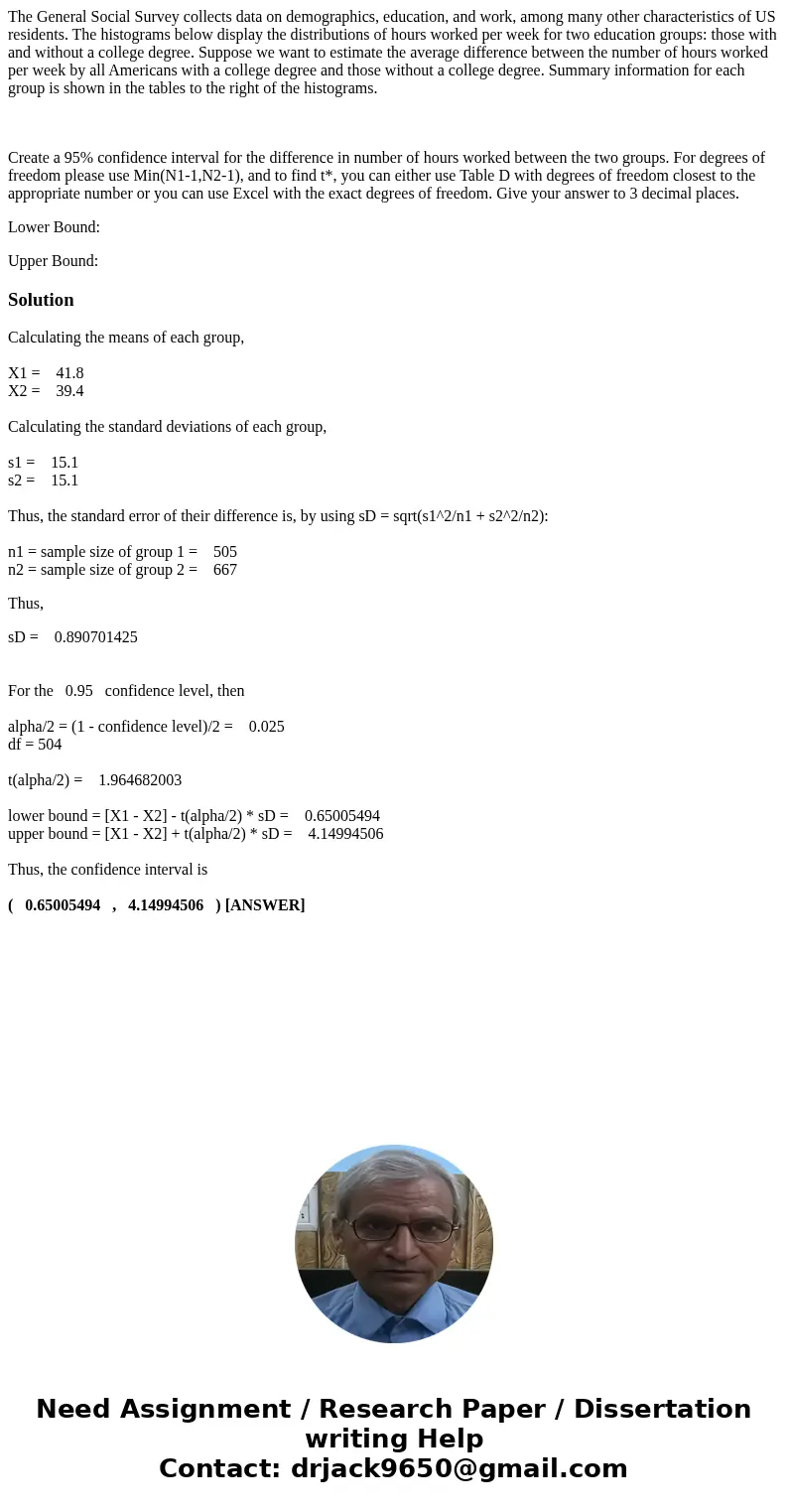The General Social Survey collects data on demographics educ
The General Social Survey collects data on demographics, education, and work, among many other characteristics of US residents. The histograms below display the distributions of hours worked per week for two education groups: those with and without a college degree. Suppose we want to estimate the average difference between the number of hours worked per week by all Americans with a college degree and those without a college degree. Summary information for each group is shown in the tables to the right of the histograms.
Create a 95% confidence interval for the difference in number of hours worked between the two groups. For degrees of freedom please use Min(N1-1,N2-1), and to find t*, you can either use Table D with degrees of freedom closest to the appropriate number or you can use Excel with the exact degrees of freedom. Give your answer to 3 decimal places.
Lower Bound:
Upper Bound:
Solution
Calculating the means of each group,
X1 = 41.8
X2 = 39.4
Calculating the standard deviations of each group,
s1 = 15.1
s2 = 15.1
Thus, the standard error of their difference is, by using sD = sqrt(s1^2/n1 + s2^2/n2):
n1 = sample size of group 1 = 505
n2 = sample size of group 2 = 667
Thus,
sD = 0.890701425
For the 0.95 confidence level, then
alpha/2 = (1 - confidence level)/2 = 0.025
df = 504
t(alpha/2) = 1.964682003
lower bound = [X1 - X2] - t(alpha/2) * sD = 0.65005494
upper bound = [X1 - X2] + t(alpha/2) * sD = 4.14994506
Thus, the confidence interval is
( 0.65005494 , 4.14994506 ) [ANSWER]

 Homework Sourse
Homework Sourse